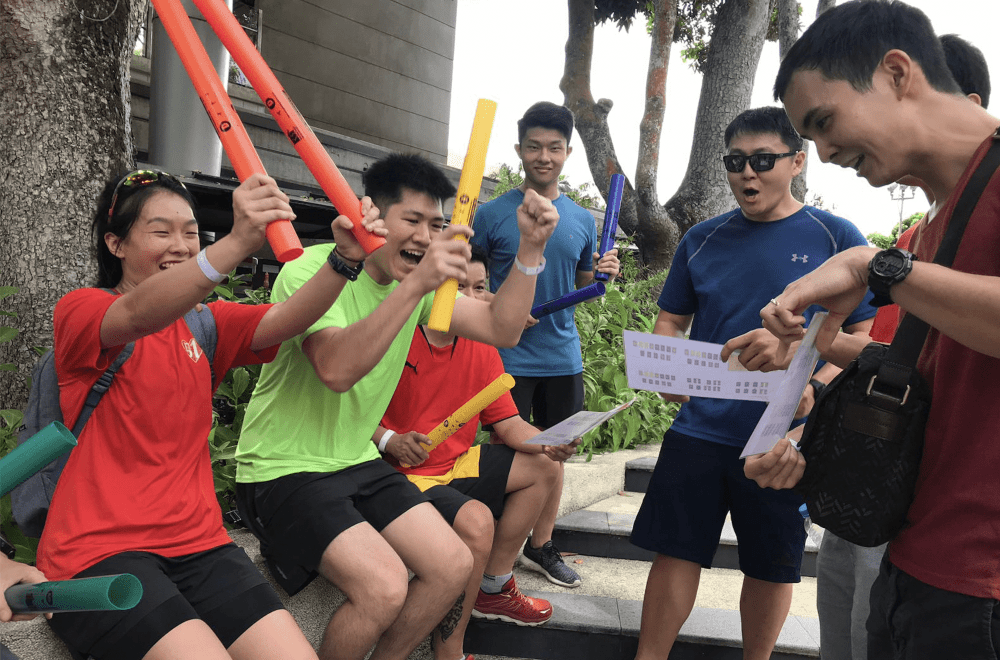Does Knowing Your Employees' Personality Types Help You for Your Team Building Event?
In the world of team building, understanding employees’ personality types can be a game-changer. Tailoring team-building activities to match diverse personality traits not only boosts engagement and enjoyment but also enhances collaboration and overall success. This article explores the benefits of knowing your employees’ personality types and provides practical advice on how to use this knowledge to create more effective and inclusive team-building events.
1. The Importance of Personality Types in Team Building
Recognizing the different personality types within your team allows you to design activities that cater to various preferences and strengths. Each personality type influences how individuals interact, communicate, and approach tasks. By aligning team-building activities with these traits, you can create an environment that maximizes participation and effectiveness.
Key Benefits:
- Enhanced Engagement: Activities that resonate with employees’ personality types are more likely to keep them interested and enthusiastic.
- Improved Collaboration: Tailoring activities to different personalities can bridge communication gaps and promote better teamwork.
- Increased Effectiveness: When activities align with individuals’ natural strengths, they can contribute more effectively to team goals.
2. Popular Personality Typing Models
Several personality typing models offer insights into individual traits and preferences. Two of the most commonly used models are:
Myers-Briggs Type Indicator (MBTI): The MBTI categorizes individuals into 16 personality types based on four dichotomies: Introversion vs. Extraversion, Sensing vs. Intuition, Thinking vs. Feeling, and Judging vs. Perceiving. Understanding these types helps in selecting activities that match different preferences, such as group problem-solving tasks for extroverts and solitary reflection challenges for introverts.
Big Five Personality Traits: The Big Five model assesses personality along five dimensions: Openness, Conscientiousness, Extraversion, Agreeableness, and Neuroticism. This model provides a broad understanding of employees’ tendencies and preferences, aiding in the design of activities that appeal to various traits, such as creative tasks for high Openness individuals and structured tasks for those high in Conscientiousness.
3. Designing Team-Building Activities Based on Personality Types
Introverts vs. Extroverts: Introverts typically prefer quieter, more reflective activities. They might excel in solo challenges or small group discussions where they can think deeply and contribute thoughtfully. Extroverts, on the other hand, thrive in energetic and interactive settings. Activities that involve group dynamics, such as collaborative problem-solving or team competitions, can cater to their strengths.
Sensing vs. Intuition: Sensing types often prefer practical, hands-on tasks that involve concrete details and clear instructions. Intuitive types enjoy exploring abstract concepts and big-picture thinking. Incorporating a mix of detail-oriented tasks and strategic planning activities can cater to both preferences, ensuring that all team members are engaged and challenged.
Thinking vs. Feeling: Thinking types value logical reasoning and objective analysis. Activities that involve solving problems through structured methods and data-driven decisions can appeal to them. Feeling types prioritize personal values and harmony within the group. Activities that focus on emotional connection, empathy, and collaborative decision-making can resonate with these individuals.
Judging vs. Perceiving: Judging types appreciate structure and organization. They prefer activities with clear objectives and timelines. Perceiving types, however, enjoy flexibility and spontaneity. Balancing planned activities with opportunities for open-ended exploration allows both types to participate comfortably and effectively.
4. Practical Tips for Implementing Personality-Based Team Building
Conduct Pre-Event Assessments: Before planning your event, use personality assessments or surveys to gather insights into employees’ traits and preferences. This information can guide the selection and customization of activities to better suit your team’s diverse needs.
Offer Diverse Activity Options: Design a range of activities that cater to different personality types. For example, include both collaborative tasks and individual challenges to appeal to a broad spectrum of preferences. This approach ensures that all team members have the opportunity to engage in ways that align with their strengths.
Promote Inclusivity: Ensure that activities are inclusive and respectful of various personality types. Avoid activities that might isolate or overwhelm certain individuals. Aim for a balance that allows everyone to contribute and participate meaningfully.
Gather Feedback: After the event, solicit feedback from participants to evaluate how well the activities met their needs and preferences. Use this feedback to refine future team-building efforts and better align them with employees’ personality types.
Conclusion
Incorporating employees’ personality types into team-building activities is a strategic approach that can significantly enhance the effectiveness and enjoyment of corporate events. By understanding and catering to different personality traits, organizations can create more engaging, inclusive, and impactful experiences.
Tailoring team-building activities to personality types not only boosts participation and satisfaction but also strengthens team cohesion and collaboration. As you plan your next team-building event, consider how personality insights can shape and elevate the experience, leading to a more motivated and unified team. Embracing this approach can transform your team-building efforts from routine gatherings into powerful opportunities for growth and connection.
To head back to read another article in our blog, click here.

